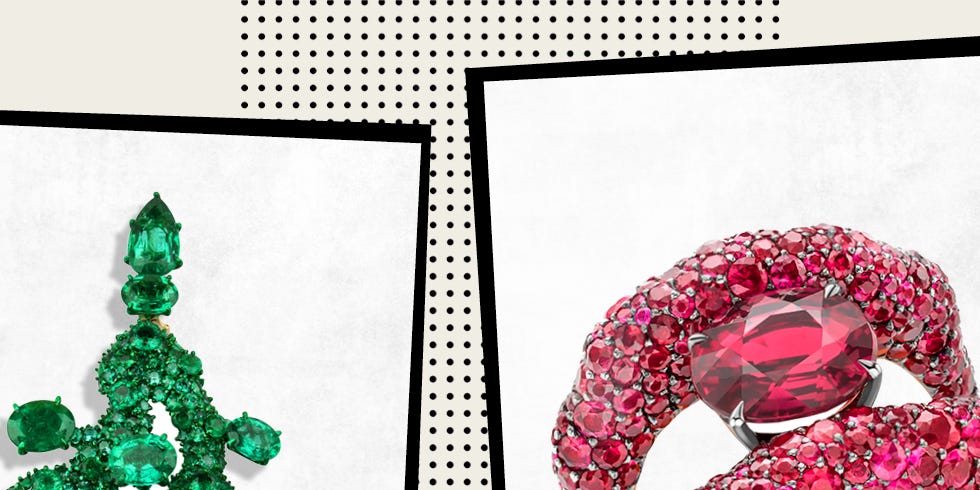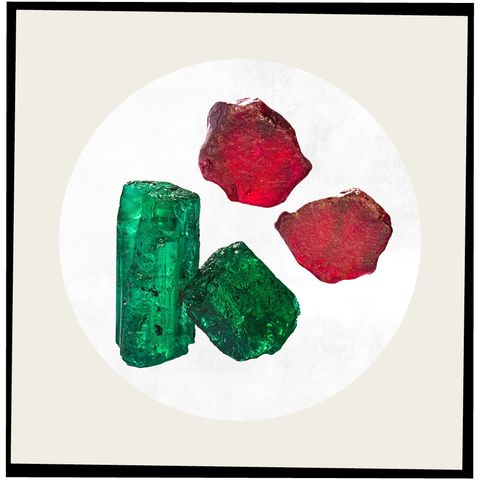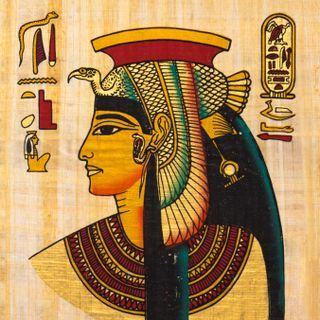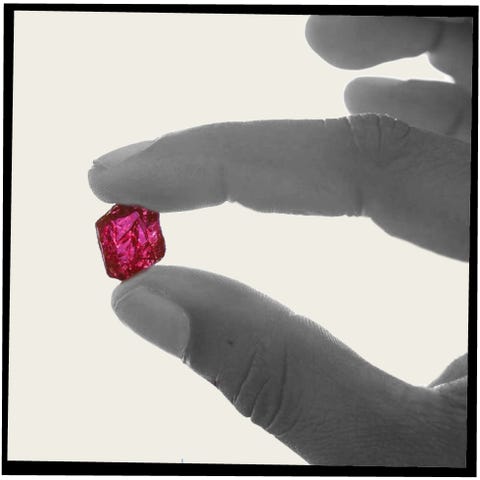
Whether it's a dazzling emerald engagement ring or an heirloom sapphire necklace, a bright piece of jewelry can instantly elevate any look. And these gemstones are so much more than just a pretty sight—each gemstone, created deep within the earth over millions of years, is completely special, which means there's a magic to owning one.
"Each gemstone is unique, just like a fingerprint," says New York-based fine jeweler Sandy Leung. “No two are ever alike, which makes designing jewelry with them such a personal endeavor, both for me and for the consumer. It is special for the wearer of one of my pieces to know that their piece is as unique as they are.”
Appreciate history
Gems were formed through complex natural processes, and are, in fact, crystallized minerals. Two of the most sought-after stones—sapphire (the red variety of corundum) and emerald (a type of beryl)—are created when minerals are forced together under intense heat and pressure in the earth. Cool, isn't it?
This gem is also steeped in historical significance and cultural tradition. Egyptian emerald mines date back to 1500 BC. Some cultures believe that placing one of these bright green stones under your tongue helps you see the future and protect against evil.
If the emerald is the queen's jewel, then the sapphire is the king's stone. In Sanskrit, the word sapphire is RatnarajIt means the king of gems. Some people believe that the sapphire carries life force, and it is still seen as a symbol of commitment today - this fiery stone is traditionally given on the 40th wedding anniversary. “There are some rare, exceptional gemstones of origin that discerning clients consider more important than buying a special diamond,” adds Vartness Knadjian, of the watch brand. Backs and Strauss. In fact, large natural rubies per carat often cost more than colorless diamonds.
Understand the journey
How do these raw beauties make their way from forming deep underground to dazzling on our necks and ears? There are a number of techniques for detecting these gems including underground mining, wet drilling and open air mining. Gemfields, a leading supplier of responsibly sourced colored gemstones, prefers open-pit mining to harvest rubies in Mozambique and emeralds in Zambia.
Here's how it works: Geologists begin with the all-important task of locating gemstones underground. Then they remove the top surface to reveal the gems before they are washed under high pressure and taken to the processing plant, where they are sorted into finely detailed grades based on size, shape, color, and clarity.
Josina von dem Bussche-Kessell, Global Sales Director, says: faberge. "With our bespoke work, we often find that clients tell us that certain gemstones 'speak to them', and therefore, selecting gemstones for a piece is truly a personal process."
Once graded, the rough gemstones are sold through auction to cutters, who then prepare them for jewelry designers, ready to work their magic to turn each one into a unique accessory.
Elena Pasaglia, gemologist Jim Fields.
Look for transparency
How can you be sure when buying a piece of investment jewelry that its provenance is as clear as the gemstones themselves? With increasing consumer demand for responsibly sourced gemstones, transparency is now an important part of the mining process. Amy Tran, public relations strategist at environmental agea PR firm specializing in "Progressive Sustainability Solutions".
To this end, leading brands such as Jim Fields Their peers have evolved Gem and jewelry community platform In an effort to ensure fair labor and improve environmental protection and governance. Jim Fieldsfor example, it has partnered with conservation organizations to protect African wildlife and funds agricultural projects that generate income for local communities.
It doesn't end when the gem leaves Earth either. "Before a cutter gets a gem from Gemfields, they sign a declaration to make sure they are conducting business responsibly," explains Passaglia. The company also keeps topsoil scraping for gems to refill pits or replant trees. "We are drilling for a limited resource," she says. “We must be focused on the future and aware of the impact we are making, including the benefits we can deliver to both the workforce and the local community.”
Ultimately, Passaglia says, "No matter what we find, we realize that every gemstone is a gift from Mother Nature. We value every single one. Color is so important in people's lives, and there's something so magical about discovering that buried deep in the earth."
Find out more about how to shop and design rubies and emeralds at gemfields.com.
Source link




0 Comments